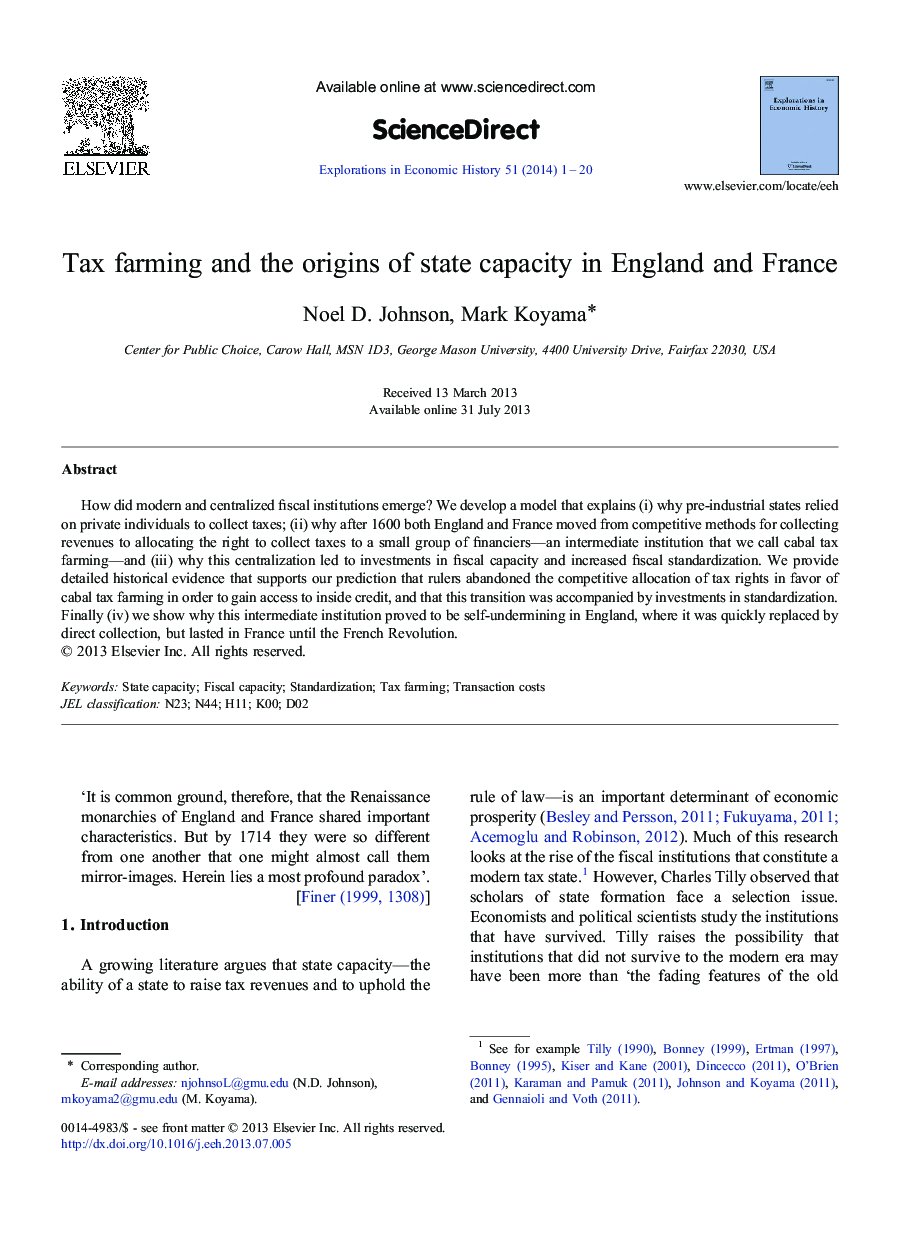| Article ID | Journal | Published Year | Pages | File Type |
|---|---|---|---|---|
| 5068745 | Explorations in Economic History | 2014 | 20 Pages |
Abstract
How did modern and centralized fiscal institutions emerge? We develop a model that explains (i) why pre-industrial states relied on private individuals to collect taxes; (ii) why after 1600 both England and France moved from competitive methods for collecting revenues to allocating the right to collect taxes to a small group of financiers-an intermediate institution that we call cabal tax farming-and (iii) why this centralization led to investments in fiscal capacity and increased fiscal standardization. We provide detailed historical evidence that supports our prediction that rulers abandoned the competitive allocation of tax rights in favor of cabal tax farming in order to gain access to inside credit, and that this transition was accompanied by investments in standardization. Finally (iv) we show why this intermediate institution proved to be self-undermining in England, where it was quickly replaced by direct collection, but lasted in France until the French Revolution.
Related Topics
Social Sciences and Humanities
Arts and Humanities
History
Authors
Noel D. Johnson, Mark Koyama,
